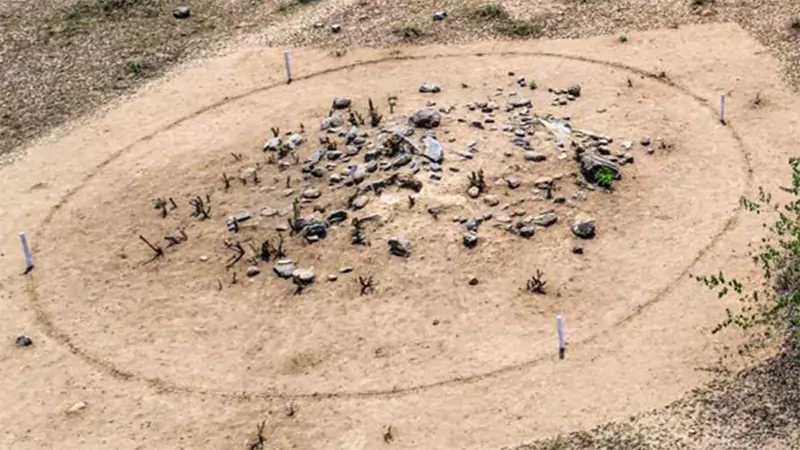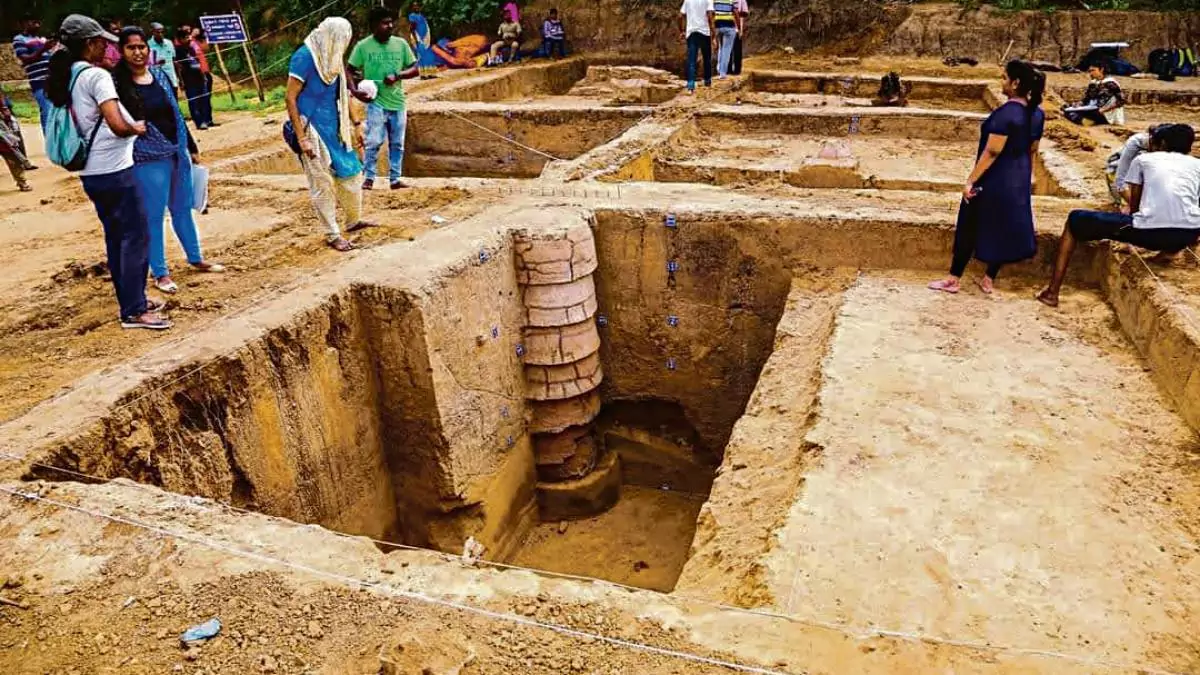Hundreds of Years Earlier Iron Age in TamilNadu
Chronology and Regional Spread
- The Iron Age in India is believed to have started around 1000 BCE .
- Earliest iron objects appear in the western Gangetic plains and Central India .
-
Important early iron-using sites include:
- Atranjikhera (Western Uttar Pradesh)
- Malhar (Uttar Pradesh)
- Gufkral (Kashmir)
- Hallur (Karnataka) – early iron usage in South India, dated to 1200 BCE .
- Analytical Link : The simultaneous appearance of iron in both North and South India challenges the older belief of a unidirectional diffusion of technology from the Gangetic plains.
Material Culture and Technological Advancements
- Introduction of iron tools marks a major technological leap from the earlier Chalcolithic phase.
-
Tools included:
- Agricultural implements like ploughshares, sickles
- Domestic tools: knives, tongs
- Weapons: swords, arrowheads
- These iron implements significantly boosted agricultural productivity and cleared forests for settlements.
Associated Cultures
- PGW Culture (Painted Grey Ware) – c. 1200 to 600 BCE
- Located in the Upper Ganga Valley , parts of Punjab and Haryana.
-
Characterized by:
- Grey pottery with painted black designs.
- Small rural settlements.
- Use of limited iron implements.
- Closely linked with Later Vedic culture .
- NBPW Culture (Northern Black Polished Ware) – c. 700 to 200 BCE
- Associated with the urban phase and early Mahajanapadas .
-
Features:
- Highly lustrous black pottery.
- Full-fledged iron usage.
- Urban centers like Rajghat, Kausambi, Pataliputra emerged.
This period coincides with the rise of kingdoms and second urbanization .
Economic Transformation
- Iron tools facilitated:
- Permanent agriculture , especially in alluvial zones.
- Expansion into previously forested or marginal lands .
-
Agricultural surplus enabled:
- Specialized crafts and long-distance trade .
- Rise of urban centers , guilds, and coinage.
- Directly links to the emergence of state-level societies and urban economies.
Political Implications
- Iron weapons strengthened emerging monarchies and oligarchies in the Mahajanapadas.
- Facilitated territorial expansion and centralized rule.
- Armed warfare and military supremacy became key tools of statecraft.
- Iron thus becomes a political resource , apart from being an economic one.
Iron Age in South India: Megalithic Culture
- South Indian Iron Age is distinct due to its burial practices , known as Megaliths .
- Dates to around 1200 BCE to 300 BCE .
-
Prominent sites:
- Hallur, Brahmagiri, Maski (Karnataka)
- Adichanallur (Tamil Nadu)
- Nagarjunakonda (Andhra Pradesh)
Features of Megalithic Burials
- Monumental burial structures : cairn circles, dolmens, urn burials.
- Grave goods: iron weapons, ceramic vessels, ornaments – denote social stratification .
- Indicate ancestor worship and ritual significance .
- Cultural continuity: Some megalithic sites are still revered in local traditions.
Second Urbanization and State Formation
- Iron usage is strongly linked with the Second Urbanization (6th century BCE) .
-
Enabled clearing of the Ganga plains , facilitating:
- Dense agriculture
- Urban settlements
- Formation of Mahajanapadas (like Magadha, Kosala)
- Laid the material basis for Magadhan imperialism and ultimately the Mauryan Empire .

Cultural and Religious Dimensions
- Iron Age saw emergence of orthodox Vedic rituals , alongside heterodox sects like Buddhism and Jainism .
- Societal changes led to varna hierarchies , with iron workers often placed in lower varnas.
- Link between material culture and socio-religious transformation .
Archaeological Importance
-
Excavations have revealed:
- Iron smelting furnaces (e.g., in Malhar and Atranjikhera)
- Tools, slag, and weapons in large numbers.
- Use of thermoluminescence dating to date pottery and C-14 dating for organic remains.
- Reliable archaeological evidence used to reconstruct proto-historic societies .
Continuity and Legacy
-
Megalithic traditions continue into present times in:
- Rituals,
- Worship of ancestors and nature,
- Folklore around hero stones (virgal).
- Demonstrates the deep cultural imprint of Iron Age societies on Indian civilization.
Mains Practice Questions
- “Iron technology was the trigger for economic and political transformation in early India.” Discuss.
- Compare and contrast the Iron Age cultures of North and South India.
- Examine the role of iron in the rise of the Mahajanapadas and the process of urbanization.













